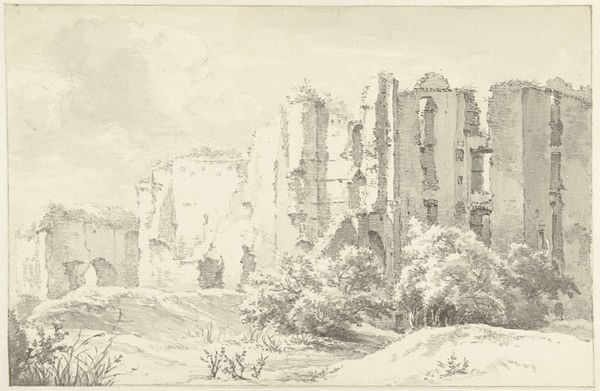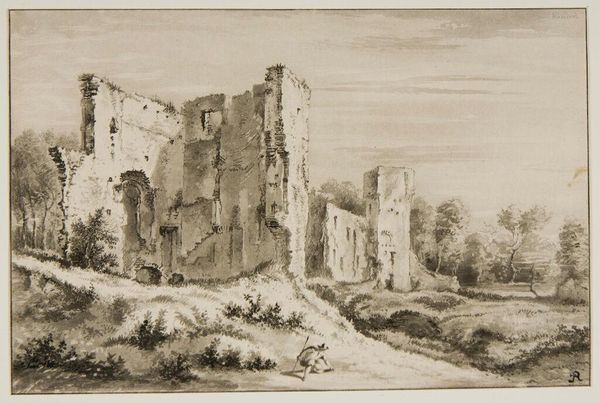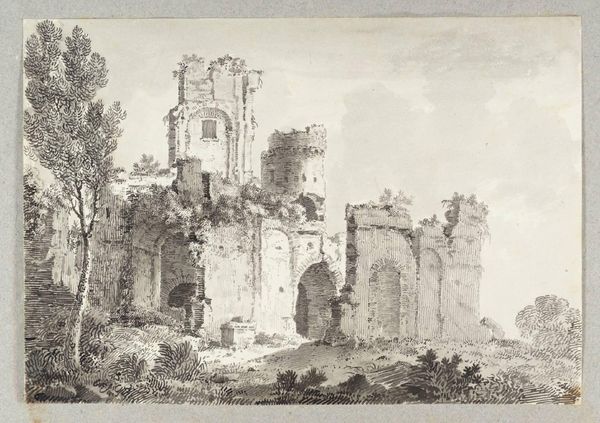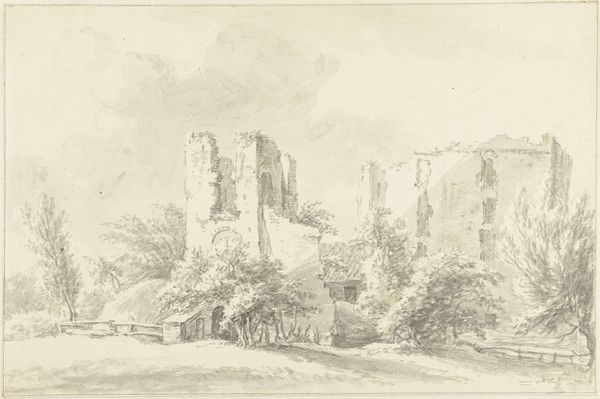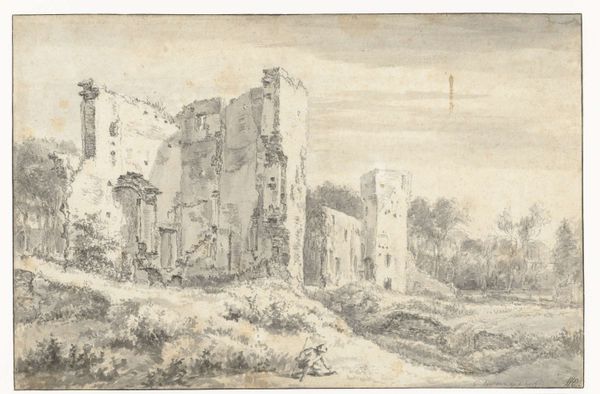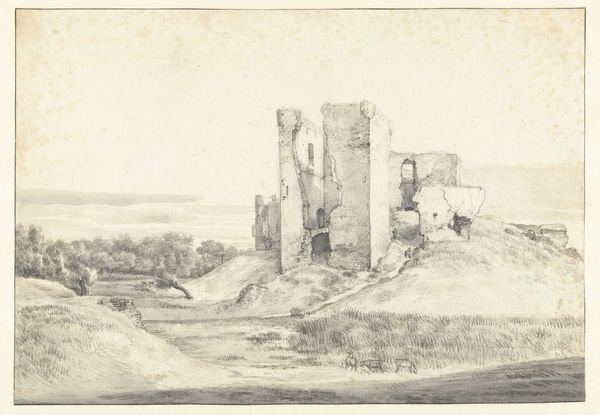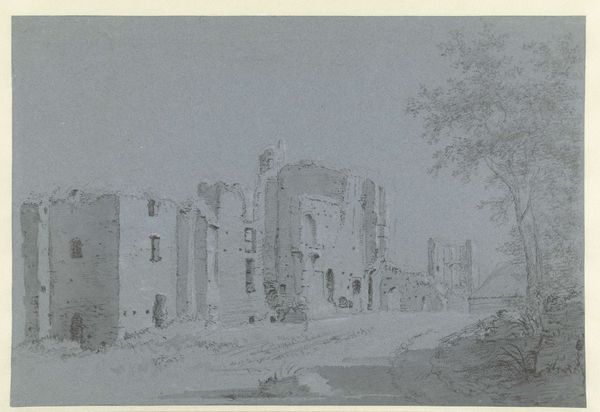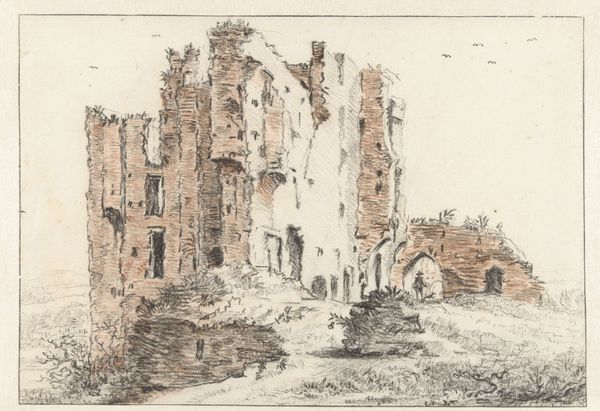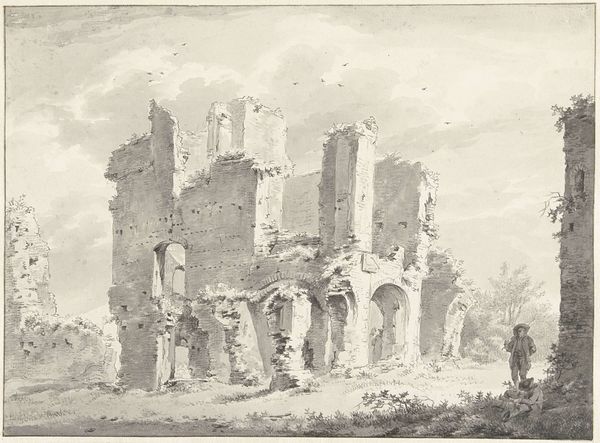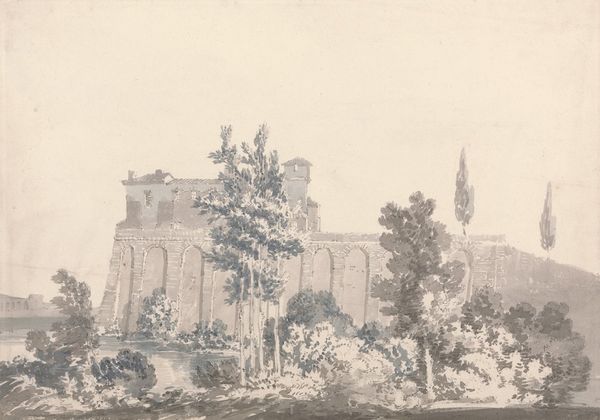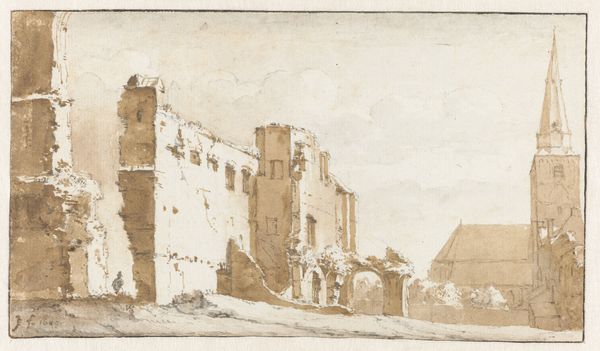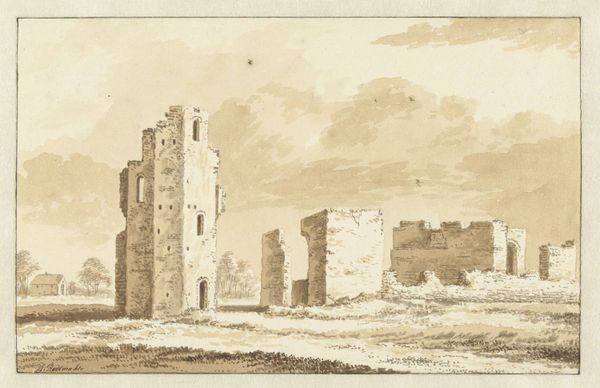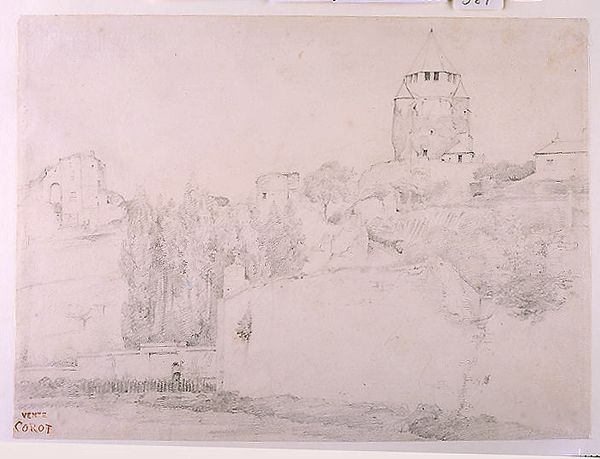
Dimensions: height 280 mm, width 430 mm
Copyright: Rijks Museum: Open Domain
Egbert van Drielst captured the Ruïne van Brederode in this drawing. The stark ruin, rendered with delicate strokes, immediately invokes the concept of the "memento mori." For centuries, the ruin has symbolized the transience of human achievement. Consider ancient Roman ruins: symbols of the empire's former glory, yet reminders of its fall. This motif reappears throughout the Middle Ages and the Renaissance, often carrying a moralizing message about the impermanence of worldly power. The ruin speaks to our collective memory, tapping into a subconscious awareness of inevitable decline and the cyclical nature of history. In our mind's eye, the ruin becomes an emotional space, resonating with a sense of melancholy and the poignancy of lost grandeur. The drawing doesn't just show the decay of stone but the enduring human fascination with the passage of time and the reflection on what once was.
Comments
No comments
Be the first to comment and join the conversation on the ultimate creative platform.
